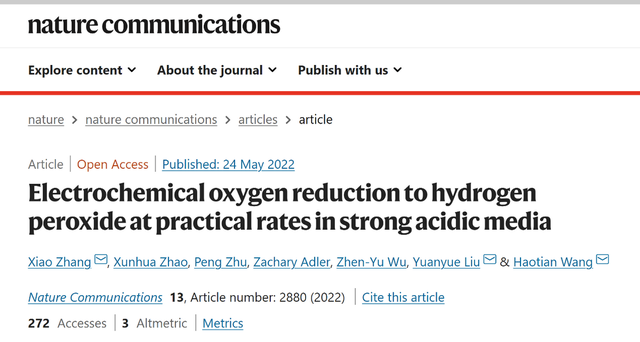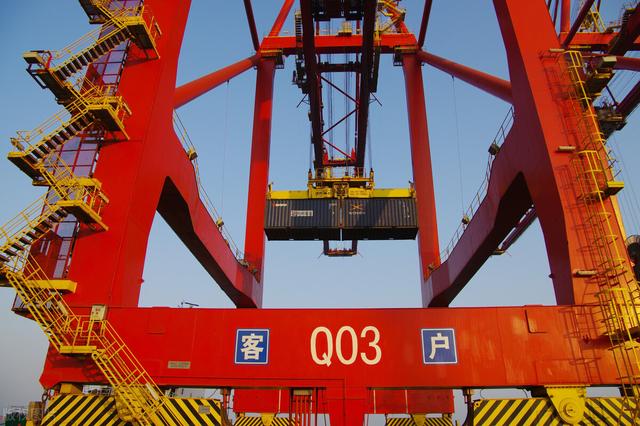跟着WHO简报学英文(4.10)
词汇表:
1.WHO-World Health Organization 世界卫生组织
2.hardest-hit 重创
3.rural 乡村
4.clusters of cases 聚集性案例
5.community spread 社区传播
6.overstretched 超负荷运转的
7.infrastructure 基础设施
8.expedite 加速
9.respiratory pathogens 病原体
10.PPE-Personal Protective Equipment 个人防护装备
11.diagnostics 测试剂
12.cargo aircraft 运输机
13.substantial 巨大的
======核心观点============
- 印度和非洲已经开始爆发
- 医护人员感染率达到10%,继续感染下去非常危险
- 部分国家开始放松管制
- 埃博拉病毒重现
======以下是正文=========
•Good morning, good afternoon and good evening.
早上好,下午好,晚上好。
•Globally, nearly 1.5 million confirmed cases of COVID-19 have now been reported to WHO, and more than 92,000 deaths.
总体来说,全球将近150万确诊新冠病历,超过9.2万人死亡。
•In the past week, we’ve seen a welcome slowing in some of the hardest-hit countries in Europe, like Spain, Italy, Germany and France.
在上周,我们欣喜的看到一些疫情严重的国家的疫情有减缓的迹象,比如西班牙,意大利,德国和法国。
•On a personal note, I was pleased to see my friend Boris Johnson is no longer in intensive care. I wish him all the best – as I wish the best for everyone who is facing what he faced.
我个人在这里,非常高兴的看到鲍里斯首相的病情大为好转。我祝他和所有面对疫情的人民一切顺利。
•At the same time, we’ve seen an alarming acceleration in other countries.
同时,我们已经看到在其他的一些国家,疫情正在加速。
•I want to take a moment to highlight Africa, where we are seeing the spread of the virus to rural areas. We are now seeing clusters of cases and community spread in more than 16 countries.
在这里,我强调下非洲。我们在非洲发现病毒在农村传播。我们在超过16个国家看到聚集性案例和社区传染。
•We anticipate severe hardship for already overstretched health systems, particularly in rural areas, which normally lack the resources of those in cities.
我们预期非洲在现有医疗系统过渡消耗后会有一段非常严重的时期,尤其是在缺乏医疗资源的农村。
•As Dr Moeti, the WHO Regional Director for Africa, said yesterday, this means countries need to localize the response, by urgently strengthening the existing public health and primary health care infrastructure in count
正如WHO非洲地区总监Moeti博士昨天所说,这些非洲国家需要加强公众健康服务和增加医疗资源部署。
•The recent meeting of the G20 countries expressed strong support for Africa, which must be expedited even though the numbers in Africa are still relatively small but accelerating.
近期举行的G20会议表达了对非洲的强力支持,但是这些支持需要在非洲疫情规模比较小且刚刚加速的时候尽快落地。
•I know that some countries are already planning the transition out of stay-at-home restrictions.
我也注意到一些国家正在计划逐步解除居家隔离政策。
•WHO wants to see restrictions lifted as much as an
WHO也希望任何人都不用居家隔离。
•At the same time, lifting restrictions too quickly could lead to a deadly resurgence.
同时,太快的解除居家隔离可能会导致重新出现致命性疫情。
•The way down can be as dangerous as the way up if not managed
如果在疫情的下降阶段没有好好管理可能像疫情上升阶段一样的致命。
•WHO is working with affected countries on strategies for gradually and safely easing restrictions.
•WHO和疫情国家一起研究如何逐步的,安全的放开限制。
•Important factors to consider are:
放开限制的重要条件如下:
•First, that transmission is controled.
第一,传播被控制;
•Second, that sufficient public health and medical services are available;
第二,充足的公众卫生和医疗服务。
•Third, that outbreak risks in special settings like long-term care facilities are minimized;
第三,一些特定情况的爆发风险最小,比如长期照顾设施被挤兑的风险等。
•Fourth, that preventive measures are in place in workplaces, schools and other places where it’s essential for people to go;
第四,对办公室,学校和其他对公众非常重要的地方采取了有效的隔离措施。
•Fifth, that importation risks can be managed;
第五,重要的安全事项得到管理。
•And sixth – and I cannot over-emphasize this point – that communities are fully aware and engaged in the transition.
第六,我怎么强调都不为过,公众对放松限制有充分的认知并且参与其中。
•Every single person has a role to play in ending this pandemic.
疫情人人有责。
•We are particularly concerned by the large numbers of infections reported among health workers.
我们对已经出现的医疗人员间大规模的感染非常担心。
•In some countries there are reports of more than 10 percent of health workers being infected. This is an alarming trend.
在一些国家,超过10%的医疗人员都被感染。这是一个非常值得警觉的警报。
•When health workers are at risk, we’re all at risk.
当所有的医疗人员处在风险中,我们都不能自保。
•Evidence from China, Italy, Singapore, Spain and the United States is helping us to understand why this is happening, and what we can do about it.
在中国,意大利,新加坡,西班牙和美国的一些证据正在帮助我们理解为什么医疗人员的感染率这么高,我们能做些什么。
•It shows that some health workers are actually being infected outside health facilities, in their homes or communities.
在这些国家,医疗人员实际上是在医院之外的家庭和社区被感染了。
•Within health facilities, common problems are the late recognition of COVID-19, or lack of training or inexperience in dealing with respiratory pathogens.
在医院内,医疗人员经常面对的是新冠确诊晚,或者缺乏处理新冠的训练和经验。
•Many health workers are also being exposed to large numbers of patients in long shifts with inadequate rest periods.
很多医疗工作者长时间暴露在大量病人群体内而缺乏充足的休息。
•However, the evidence also shows that when health workers wear personal protective equipment the right way, infections can be prevented.
但是,经验表明,医疗人员正确穿上防护设备后可以杜绝感染。
•That makes it even more important that health workers are able to access the masks, gloves, gowns and other PPE they need to do their jobs safely and effectively.
所以,医疗人员需要获取口罩,手套和防护服来安全和有效的服务病人。
•To support countries, WHO has launched three tools to help managers and planners calculate the health workers, supplies and equipment that will be needed for the increase in COVID-19 patients.
WHO发明了3个工具来帮助疫情国家计算因病人增加锁所需的医疗人员,医疗物资的数量。
•On Wednesday I mentioned the new United Nations Supply Chain Task Force, to coordinate and scale up the procurement and distribution of personal protective equipment, lab diagnostics and oxygen to the countries that need it most.
周三,我提到过联合国供应链组织会根据情况将个人防护设备,实验室检测剂和供氧设备提供给成员国家。
•This initiative will be coordinated by WHO and the World Food Programme, building on existing collaboration between multiple partners from within and outside the UN.
WHO和WFP联合,在联合国组织框架内和组织外,启动了第一步措施。
•This system will consist of hubs in Belgium, China, Ethiopia, Ghana, Malaysia, Panama, South Africa and the United Arab Emirates.
这套系统包含比利时,中国,埃塞俄比亚,加纳,马来西亚,巴拿马,南非和阿联酋的交通枢纽。
•We estimate this supply chain may need to cover more than 30% of the world’s needs in the acute phase of the pandemic.
我们预计这条供应链可以在紧急状况下满足30%的世界物资需求。
•Every month, we will need to ship at least 100 million medical masks and gloves;
每月我们至少需要1亿个口罩和一亿双手套。
•up to 25 million N95 respirators, gowns and face-shields;
每月最多需要2500万套N95口罩,防护服,面具;
•up to 2.5 million diagnostic tests;
每月最多需要250万份检测试剂;
•and large quantities of oxygen concentrators and other equipment for clinical care.
和大量的压缩氧气瓶和其他医疗所需物质
•To move these supplies around the world, the World Food Programme will deploy eight 747 aircraft, eight medium-sized cargo aircraft, and several smaller passenger planes to move humanitarian workers, technical staff, trainers and other personnel.
世界粮食计划将部署8架747飞机,8架中型运输机,以及一些小型的客机来把工人,技术人员,培训人员和其他相关人员和物质运输到世界各地。
•Clearly the associated costs will be substantial. The WFP estimates it will need approximately US$280 million, simply to cover the costs of storing and moving supplies. The costs of procuring supplies will be much greater.
显然相关的花费会比较昂贵。WFP预计这些存储和运输费用,最少需要2.8亿美元。如果还需要其他的物资还需要花费更多。
•We urge donors to support this vitally important system. We call on all donors to support the World Food Programme.
我们非常希望捐助者能够支持这个系统。我们呼吁所有的捐助者支持WFP。
•Today I convened a meeting of the Emergency Committee on Ebola in DRC.
今天我参与了在刚果民主共和国召开的应对埃博拉的紧急会议。
•After 52 days without a case, surveillance and response teams on the ground have confirmed a new case of Ebola in
在52天没有埃博拉病历后,刚果民主共和国的观察和响应组确认了一例新的埃博拉病毒案例。
•We have been preparing for and expecting m
我们预期有更多的埃博拉病毒案例,我们已经准备好了应对。
•Unfortunately, this means the government of DRC will not be able to declare an end to the outbreak on Monday, as hoped.
这就表明刚果民主共和国不能按期在周一公布埃博拉病毒爆发结束。
•But WHO and all partners remain on the ground and committed as ever to working under the leadership of the government, affected communities and our partners to end the outbreak.
但是WHO和所有的合作方仍然会在当地和政府,社区居民和其他合作方一起为终结埃博拉病毒爆发而努力。
•I thank you.
谢谢























评论